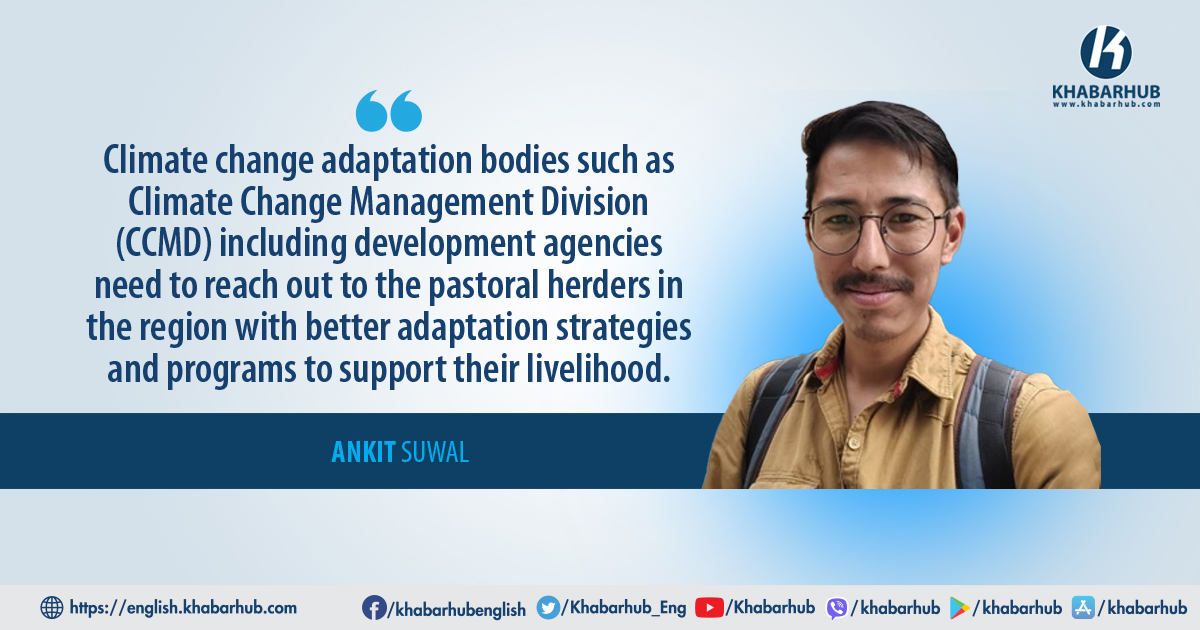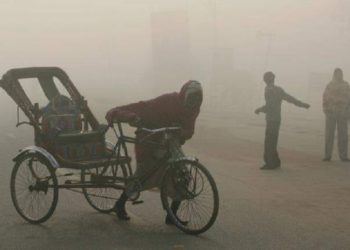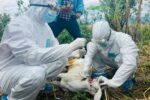Langtang National Park — Nepal’s High Mountain Region (HMR) where transhumant pastoralism has been practiced for generations — is one of the most affected regions by climate change as mountains are sentinels of environmental change.
With climate change emerging as one of the most pressing issues of this generation, CO2 emissions for more than a century has caused irreversible impacts on the Earth’s atmosphere.
In the case of mountain environments, the effects of climate change in the ecosystem can be observed through snow cover loss, receding glaciers, melting permafrost and more extreme events such as avalanches and landslides (Nepal, 2013) which impacts ecosystem services and livelihood of people living in the region.
Climate change impacts ecosystem services and the well-being of people in HMR primarily through its effects on food and feed, water availability, natural hazard regulation, spirituality and cultural identity, aesthetics, and recreation (Palomo, 2017).
This has altered the livelihoods of indigenous pastoral herders in Langtang National Park, despite their minimal contribution to global warming.
Climate Change has contributed to loss of water availability aggravating competition of various groups for the meager resources available (Paudyal, 2010).
Despite lack of understanding about climate change, the herders in the region have perceived change in temperature, precipitation and snowfall.
They could relate these changes in biophysical aspects to change in productivity of pastureland impacting their livelihood.
Pastoralism represents a complex form of natural resource management, involving a continuous ecological balance between pastures, livestock and people (Oxfam, 2008).
Anthropogenic climate change has been disrupting this ecological balance affecting pastures, livestock and people all at the same time.
The indigenous pastoral herders in HMR are some of the most vulnerable populations affected by climate change.
The bio-physical effects of climate change have been impacting their way of life from diverse perspectives.
The herders have to travel more to reach pastureland and the quality of pastureland has also been changing due to warming in the region.
Their elements of livelihood from food habits, income source, cultural practices and their reliability on ecosystem services are changing with the changing climate.
Perception of Pastoral Herders on Climate Change in the Region
Despite lack of awareness about the topic, the pastoral herders in the region are familiar with the impacts that have been affecting their livelihood.
In order to understand the local climatic phenomenon, it is important to understand the local perception (Bridges & W, 2009).
One of the herders during the study had some understanding of climate change. He had heard the term when he was working abroad.
He understood that climate change means rise in temperature and sea level as he was working in Malaysia.
The progressively greater warming in the higher altitude regions is a general phenomenon of the whole Hindu Kush–Himalaya region (Shrestha, 2009). After giving a brief explanation on the topic, local herders could relate to the phenomenon.
They mentioned that they have perceived rise in temperature and change in weather patterns in the region compared to the past.
In mountain environments, the physical effects of climate change in the ecosystem can be observed through snow cover loss, receding glaciers, melting permafrost and more extreme events such as avalanches and landslides (Nepal, 2013) which impacts ecosystem services and livelihood of people living in the region.
A 65 years old herder further mentioned how the intensity and magnitude of snowfall has decreased resulting to increase in melting of snow faster than before. He further mentioned that the retention of snow has decreased resulting to lack of moisture in soil.
This decrease of moisture in soil effects the regeneration of grass in pastureland impacting the quality and quantity of cattle feed in the region.
The change in temperature has caused generation of previously unknown plants and pests which are unfavorable to cattle.
The herders have perceived increase in shrubs that are not cattle friendly in the region due to increase in temperature.
They have also witnessed mosquitoes in Dhunche bazaar which was obsolete in the region. They further mentioned that this was due to rise in temperature in the region.
The head teacher of the local higher secondary school mentioned that there has been rise in mosquito.
Previously, there was no mosquito in the region. It has been 4-5 years that mosquitoes were seen and has been increasing ever since.
The head teacher further mentioned that cobra which is not a native snake of the region has started to appear in the region past couple of years. He mentioned that this will impact the health and safety of the people in the region in days to come.
The herders have also perceived water scarcity in the region. Earthquake being the last traumatic incident in historical timeline, the herders relate change in climate as well as decreasing water sources to the event.
There is no perennial source such as glacier, high altitude lake or river in Dhunche-6 where the study was conducted.
The herders mostly depend on seasonal water sources, streams and waterfall of who’s the source is unknown.
The herders’ lifestyle in HMR pastureland is difficult. There is no permanent or semi-permanent structure to live in, no toilet, electricity supply or a well-managed cowshed to keep the cattle and their living space separate.
Climate Change has contributed to loss of water availability aggravating competition of various groups for the meager resources available (Paudyal, 2010).
According to the herders, the water sources have been decreasing and some even buried due to landslides. They have to travel long distances in search of water sources for drinking and herding cattle. The winters are also getting dryer compared to the past.
In contrary to Dhunche-6, a nearby village called Gatlang has perennial water source. There is also a high-altitude lake in the region but still the herders in the region perceive water scarcity.
In historical timeline of the region, there had been a forest fire. The herders in the region relate to water scarcity to the forest fire and earthquake for they are the two recent events in the historical timeline.
The reasons for water scarcity such as forest fire, earthquake, and geographical changes, climate change is a subtle, hidden but a highly possible reason.
However, EbA (Ecosystem based Adaptation) projects have been implemented in the region by various NGOs to improve the access to water source for pastoral herders in the region.
Adaptation Measures
According to a National Park officer, National Park along with buffer zone management committee supports the pastoral herders by clearing the unwanted shrubs grown in the pastureland.
This helps for better regeneration of pasture for cattle feed in the region. The team also helps build wooden bridges in landslides and waterfall for better mobility of cattle and herders in the region.
The herders in the region have also insured all their cattle with insurance companies. One of the herders who lost 3 cattle in an accident previous year, was compensated by insurance company.
This has supported the herders to minimize the financial risk of losing cattle to any natural calamities or health hazards benefiting their livelihood.
In case of water scarcity, Ecosystem Based Adaptation (EbA) projects has been implemented by various NGOs to provide water supply for the herders and cattle in the region.
The herders’ lifestyle in HMR pastureland is difficult. There is no permanent or semi-permanent structure to live in, no toilet, electricity supply or a well-managed cowshed to keep the cattle and their living space separate.
They live in a weak temporary structure, with a solar bulb and share their living space with cattle. It is hygienically poor and unsafe.
As mentioned by Achraya and Baral 2017, the expansion of various forms of forests and biodiversity conservation initiatives in the territory of pastoral herders without consultation and free, prior and informed consent, and imposition of a set of new rules and regulations, however, have limited them to employ and enjoy their customary practices (Acharya & Baral, 2017).
The herders mentioned that their livelihood could have been better if the National Park would let them build a semi-permanent or permanent structure for their living space and cowshed.
They also mentioned that the National Park doesn’t allow them to cut extra trees for firewood and to build such structures because the national park is concerned about protection of forest and wild life.
They have to depend on limited firewood and when asked about the semi-permanent or permanent structures, the national park responds such structures support hunters and poachers to live in while they are hunting in the region when the herders aren’t around.
The current problems of deforestation and forest degradation in the HMR are not the transhumance pastoralism and associated customary laws and institutions but the policy and institutional mismatch, and many other unplanned development interventions (Baral et al. 2012).
With such restrictions the herders are found more exposed and vulnerable to the changing climate and no adaptation measures are taken in this context.
In contrary, the information provided by a Key Informant on Gatlang village, the situation is different from Dhunche-6.
This region does not fall under the jurisdiction of Langtang National Park but rather under District Forest Office (DFO).
There are short term adaptation practices carried out in the region from cutting down unwanted bushes, insuring cattle, building bridges in waterfalls and landslides but it is the long term effects that make them more vulnerable to uncertainty and risk of climate change and its hazards.
The number of herders in the region is also more compared to Dhunche-6. There are 38 herders in Gatlang and the number has increased compared to the past where as there are only 11 herders in Dhunche-6 and the number have decreased compared to the past.
Further, under the jurisdiction of DFO the restrictions to cut down trees are permissive compared to National Park.
The herders have semi-permanent and even permanent structures to live in pasturelands (Kharka) made out of wood and timber cut down from the forest.
According to the historical timeline, the regeneration of trees after forest fire in the region is slow because of over herding of cattle in the region.
Besides difficulty in regeneration of trees, over grazing has also caused scarcity of pasture in the region.
In case of water scarcity, Ecosystem Based Adaptation (EbA) projects has been implemented by various NGOs to provide water supply for the herders and cattle in the region.
This has helped the herders in the region to adapt to the decreasing water source caused by geographical change, forest fire, and climate change.
Conclusion
The pastoral herders living in the HMR of Langtang National Park are marginalized from various opportunities and facilities. The living conditions are harsh.
There is no proper shelter, electricity, sanitation facilities, road and telephone network making their lifestyle vulnerable to many factors including harsh weather conditions, wild animals and exposure to the changing climate and its impact in the region.
Climate change adaptation bodies such as CCMD including development agencies need to reach out to the pastoral herders in the region with better adaptation strategies and programs to support their livelihood.
The pastoral herders need additional financial resources to uplift their livelihood as adaptation to climate change mostly needs such additional resources.
Climate change is a phenomenon that happens over a long period of time.
There are short term adaptation practices carried out in the region from cutting down unwanted bushes, insuring cattle, building bridges in waterfalls and landslides but it is the long term effects that make them more vulnerable to uncertainty and risk of climate change and its hazards.









Comment